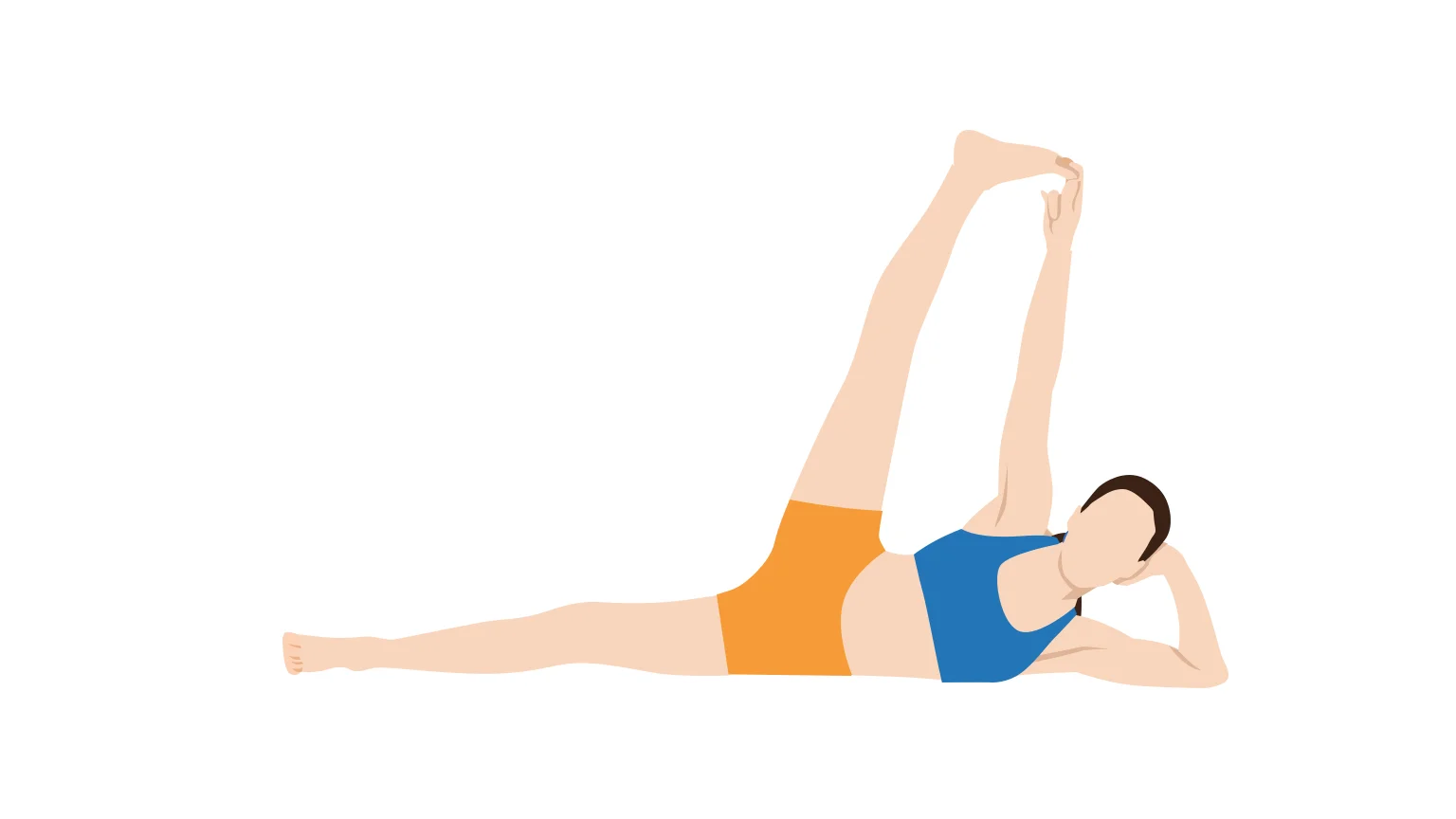Anantasana (Side-reclining Leg Lift, Sleeping Vishnu Pose)

Anantasana, also known as the Side-reclining Leg Lift, Sleeping Vishnu Pose or Eternal One’s Pose is a reclining yoga pose requiring balance and stability. In this pose, the yogi lies on his or her side, supporting their head with one hand while stretching their other arm upwards to grasp their raised leg. It’s a great asana to strengthen the sides of your torso, stretch your hamstrings and enhance core stability.
- Position: Lateral.
- Stretched body parts: Hamstrings, calves, sides of body.
- Benefits: This pose promotes better balance, increased core strength and improved flexibility. It stretches your hamstrings, the sides of your torso and engages your core.
- Symbolism: This pose symbolizes Lord Vishnu’s sleep on the thousand-headed serpent Ananta.
- Similar poses: Legs up the Wall Pose (Viparita Karani), Reclined Big Toe Pose (Supta Padangusthasana), Boat Pose (Navasana).
Meaning of Anantasana
The term Anantasana derives from the Sanskrit “Ananta”, which translates to “endless” or “infinite”. Ananta is one of many names given to Lord Vishnu. It is also the name of Shesha, the thousand-headed snake on which Lord Vishnu reclines on in his cosmic sleep.
The pose represents the state of this tranquility and eternal rest, and represents the boundless and timeless nature of the universe, symbolizing the yogi’s aspiration to reach a state of tranquility and meditation.
How to do the Anantasana yoga pose

- First, lie on the floor on your left side. Fully extend your left leg and flex your foot away from your body. Push your foot against the floor to support your position.
- Extend out your left arm away ‘above’ your head so that your left leg, torso and left arm run in a straight line.
- Now, bend your left elbow and hold your head with your palm. Be sure to fully extend and stretch out your arm so that your upper arm is firmly placed on the floor.
- With your right arm, grasp the toes on your right leg with a yogi toe lock.
- Inhaling as you extend your leg, rotate your right leg about your hip so that your toes point up towards the ceiling.
- Ensure your leg is fully extended so that you feel a stretch in your hamstrings and into your hips.
- Hold the position for 30-60 seconds, then repeat for the other side.
Variations
- For extra support: If you find it difficult to maintain balance, you can practice this pose near a wall. Let your back rest gently against the wall for added stability.
- Easier variation: If you find extending your leg to the top too challenging, keep your knee bent and focus on opening your hip.
- More challenging: For an extra challenge, try performing the Anantasana without support from your lower arm. Instead of resting your head on your arm, try extending your arm along your body. This will require more core strength and balance compared to the standard variation of Anantasana.
Tips
- Warm up before attempting this pose. It’s particularly important to do prep poses to stretch your hips and hamstrings before this pose.
- Don’t rush. Take your time and ensure you maintain balance as you extend you leg upwards.
- Keep your gaze forwards instead of looking up to avoid any neck discomfort.
- Take deep, controlled breaths and stay calm during the pose and movement.
- If you can’t fully extend your leg at first, use the easier variation with a bent knee. With regular practice, your flexibility will improve.
Prep poses
- Reclining Big Toe Pose (Supta Padangusthasana) – Stretches your legs, in preparation for the Anantasana pose.
- Gate Pose (Parighasana) – Stretches the sides of your body as well as your legs, preparing your body for the side stretch in Anantasana.
- Extended Triangle Pose (Utthita Trikonasana) – Promotes balance and flexibility in your legs and hips.
